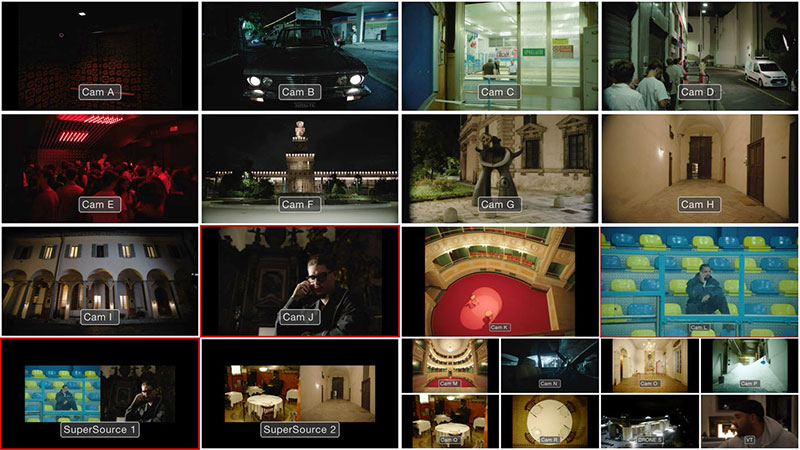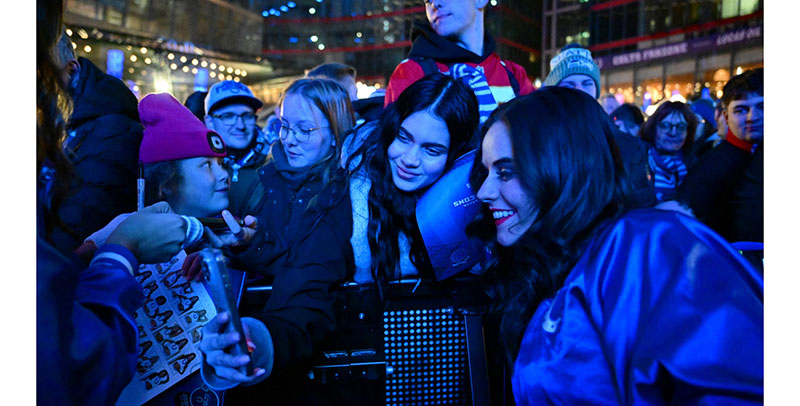To broadcast the Queen’s funeral, Dejero established its own reliable backhaul connectivity, combining Star satellite and cellular networks in a way that is unique in live broadcast.
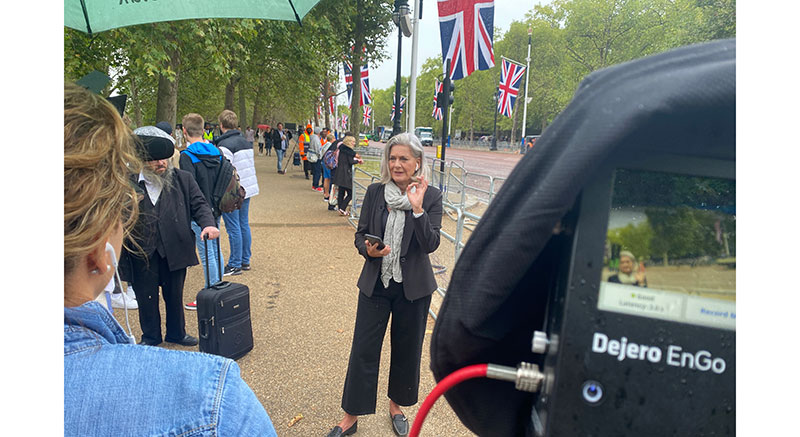
When the world’s media converged on London to cover the state funeral of Queen Elizabeth II, network availability from Hyde Park in London became restricted due to the tens of thousands of people in attendance to pay their respects, along with hundreds of media crews. Dejero was able to establish its own reliable backhaul connectivity of a kind that hadn’t been used for live broadcast production before, combining Starlink satellite and cellular networks.
Contentious Connectivity
On 19 September 2022, the Queen's state funeral took place and became one of the most watched events in television history, attracting 4.1 billion viewers worldwide. The news of her passing was announced on 8 September, just a day before the International Broadcast Convention (IBC) opened in Amsterdam, where many of the world’s broadcasters and industry vendors were headed. Many diverted to London to cover the breaking news, including teams from Dejero and its customers. They had just eleven days to set-up live production operations for the state funeral.
The Dejero team supported its customers in Hyde Park by using a combination of high-gain antennas and their EnGo mobile transmitters to create a secure LAN. Meanwhile, a Dejero GateWay network aggregation device was used to blend 4G cellular with satellite from Starlink to create reliable backhaul connectivity. This approach hadn’t been achieved before in live production.
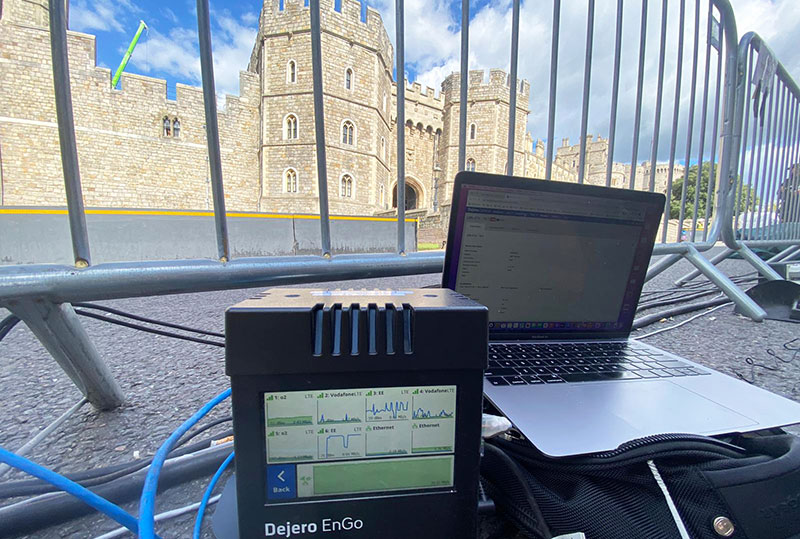
The Portable Bandwidth Challenge
In the middle of Hyde Park where tens of thousands of people had gathered to pay their respects, congested cellular networks were a huge challenge for newscasters. Demand for portable bandwidth at historic global events of this nature can take wireless networks to the brink of capacity and wreak havoc for competing news broadcasters.
Nevertheless, reliable connectivity was paramount. Using public cellular networks would have meant competing with thousands of mobile phones in an already congested environment. A mesh network, where all nodes are directly connected to all other nodes, would have been too costly and complex to set up to be viable.
Hyde Park itself presented challenges. Using 4G LTE/ 5G connectivity wasn’t an option because the broadcasters Dejero was supporting hadn’t anticipated the competition for resources or thought to reserve the band frequency for a private network – a few days’ notice wasn’t enough time to apply for a licence. A further obstacle was that in Hyde Park, Dejero’s customers were on the very edge of the Starlink network. Therefore, some creative problem-solving was called for.
A New Look at Backhaul
Dejero’s set-up involved building a private point-to-point network that didn’t need regulatory approval. This kind of network uses wireless connections to connect two locations together, with directional antennas with line of sight. Starting with a Ubiquiti access point and high-gain antennas across Hyde Park, Dejero created a secure LAN for its clients using the EnGo mobile transmitters. High-gain antennas produce a narrow stream used to increase signal strength, making them critical to long-range wireless networks. A more precise way of targeting radio signals, they even amplify weak signals used in satellite communication.

The EnGo devices encoded the camera feeds and transmitted the signals by blending a combination of ethernet, Wi-Fi and local cellular network connectivity. The devices also prioritised the network with the most bandwidth available, transmitting to onsite Dejero GateWay network aggregation hardware as backhaul.
An essential feature of wireless networking, backhaul forms the connection between an access node, such as a camera or transmitter, and the core network (or Internet). In other words, the access network connects the end devices, while the backhaul network connects this access network to the core network, and back again.
Starlink and Gateway
Rob Waters, Director Global Sales at Dejero, said, “In a normal situation when using bonded cellular, the transmitter connects to the local cell towers so that in effect, the content moves in one transfer from the live location to the destination – for instance, a control room. Technically, however, the acquisition is actually from camera/transmitter to the cell tower and the backhaul is over cell tower to destination.
“In this case the acquisition and backhaul were entirely distinct and different. For acquisition, we set up our local, private point-to-point network, which allowed each EnGo transmitter to blend traditional cellular with our own network’s bandwidth to get the content back to base.
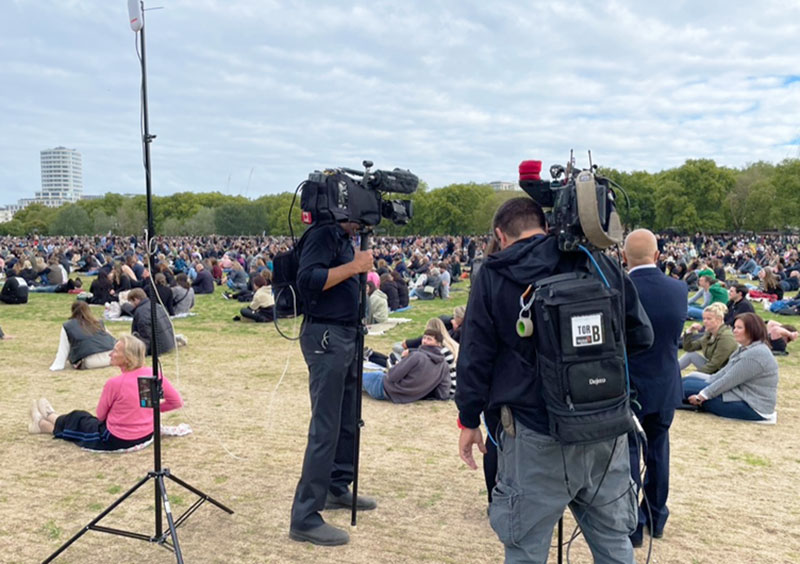
“The traditional cellular route could not be used for backhaul, as all networks were heavily contended. To get around this we used our GateWay M6E6 to blend all available cellular networks with a Starlink satellite system to create a robust connection with enough guaranteed bandwidth to move the content from the location back to wherever the content needed to be delivered, anywhere in the world.”
GateWay enabled Dejero's customers in Hyde Park to send live video feeds to the outside world, back to their media hubs for broadcasting via Starlink/cellular connectivity backhaul. This was the first time a combination of LEO (low Earth orbit) satellite connectivity with cellular for backhaul had been used for live broadcast production.
Guaranteeing Uptime
“Blending Starlink and cellular together for backhaul was a unique scenario to be in, certainly the first time we have worked in this way, and certainly the first time for our customers to have that kind of backhaul support from a congested area,” Rob said.
The GateWay’s Smart Blending Technology also manages fluctuating latency by aggregating all available network, making it possible to reduce some of the latency inherent in satellite-only connectivity. Smart Blending aggregates all available IP networks – in this case Starlink and cellular – and dynamically manages fluctuating bandwidth, packet loss and latency differences of individual connections in real-time.
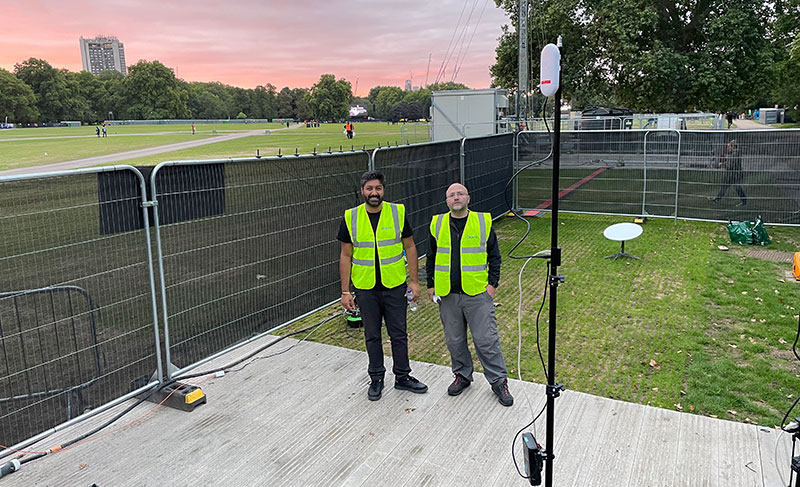
The result is a single virtual ‘network of networks’ giving access to a much greater coverage area than any single provider can deliver. Also, if any single connection becomes congested, the system can automatically reroute packets in real-time across other connection paths.
Regardless of whichever private network is used for acquisition, a reliable and robust backhaul is essential to transport content back to the station for distribution. With the eyes of the world on these unfolding events, Dejero made history of its own to guarantee uptime. www.dejero.com















